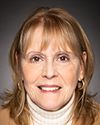Good evening, everyone.
The Confederacy of Mainland Mi'kmaq would first like to acknowledge and commend the swift action taken by Nova Scotia community leadership to proactively lock down their communities at the start of the pandemic. Some communities closed borders and had checkpoints for entry, implemented community-wide curfews and shifted to offering only essential services in the early days of the pandemic. Undoubtedly this strong leadership helped convey the seriousness of the situation and the importance of following provincial public health guidelines, and contributed as well to having no reported cases of COVID-19 in our first nation communities.
The Confederacy of Mainland Mi'kmaq, or the CMM, is a tribal council organization representing the eight Mi'kmaq communities of mainland Nova Scotia. Our mission is to proactively promote and assist Mi'kmaq communities' initiatives towards self-determination and enhancement of community.
At the CMM, we have an emergency management team. In mid-March, the organization shifted to an emergency management structure. Soon after that, daily calls with chiefs and government officials began, which explored issues in the region. Early questions included how communities access ample PPE and testing supplies, what were considered eligible expenses for various COVID funding envelopes, what were considered essential services, and jurisdictional issues around who was responsible to respond if there was a community outbreak.
Some challenges noted here were very long delays in receiving responses to questions, clear communication lines that took too long to be established and information overload. Eventually, trilateral calls were established between the Nova Scotia first nation communities, the Province of Nova Scotia and Indigenous Services Canada.
As public health is a provincial responsibility, the ability to receive clear responses to questions directly from Nova Scotia's chief medical officer of health, Dr. Robert Strang, was vital.
Existing health disparities were exacerbated by the pandemic. Similar to other indigenous populations, the Mi'kmaq experience higher rates of chronic disease, food insecurity, overcrowding in homes and impaired access to health services, all of which create barriers to employing adequate public health measures.
This past August, our communities, along with representatives of provincial and federal governments, came together for a COVID response debriefing session. The primary lessons learned here can be summarized into the following categories: communication, mental health impacts, economic impacts, jurisdictional issues and human resources.
For communication, throughout the pandemic there has been a lot of information shared, but it was not always coordinated effectively. There was too much information provided to single touchpoints, such as chiefs, to effectively distribute within the communities. We recommend fully transparent communication lines between communities, all levels of government and supporting organizations at the start of the decision-making process.
In terms of mental health impact, mental health supports were already under-resourced, and the pandemic made it worse. When communities started locking down, a trauma-informed and harm-reduction approach was used. However, communities observed an increase in drug use and relapse, with the added challenge of accessing appropriate services. Even as services began to reopen, the very low capacity that is possible cannot meet the need.
We recommend improved access to treatment centres now, with a specific focus on youth treatment; appropriate care planning for future treatment centre closure; and access to culturally appropriate mental health supports.
In terms of economic impact, the funding opportunities made available during the pandemic did not adequately meet Mi'kmaq communities' needs. Communities relied heavily on own-source revenue to fill gaps not met by government support programs. First nation communities were also left out of decisions that would affect the financial livelihood of communities, such as closure of fisheries and gaming. This left communities in debt and uncertain about their financial futures.
We recommend increased funding, including economic recovery plans, for community own-source revenue.
In terms of jurisdictional issues, the pandemic response has amplified the disconnect between first nations community bylaws and their enforcement. It is the observation of community leaders that neither federal nor provincial law enforcement would assume authority for community bylaws.
We recommend that law enforcement respect and support bylaws developed by community leadership.
In terms of human resources, the pandemic highlighted the need for improved emergency management support at the local community level. First nation communities had to pull from already understaffed community-based resources, which contributed to staff burnout and high stress.
We recommend targeted funding for permanent emergency management coordinator positions at the local community level.
In closing, improved communication, access to more human resources and the provision of mental health supports will positively impact health outcomes for Nova Scotia Mi'kmaq when faced with a second wave of COVID-19. Economic recovery plans need to include Mi'kmaq community governments, businesses and entrepreneurs. First nation communities will be better prepared for the next wave; however, improvements for increased preparedness will require continued communication and co-operation on all levels of government. Fortunately, the challenges ahead are better understood, staff are better prepared and agreements are being put in place.
Future success in this pandemic requires attention at all levels. We are all in this together.
Wela'lioq.




